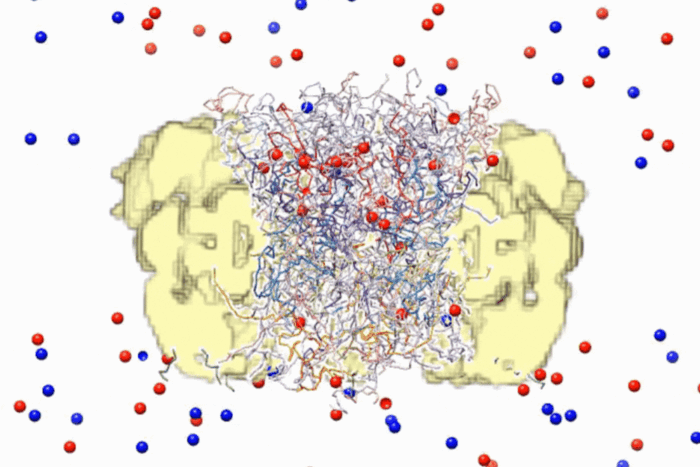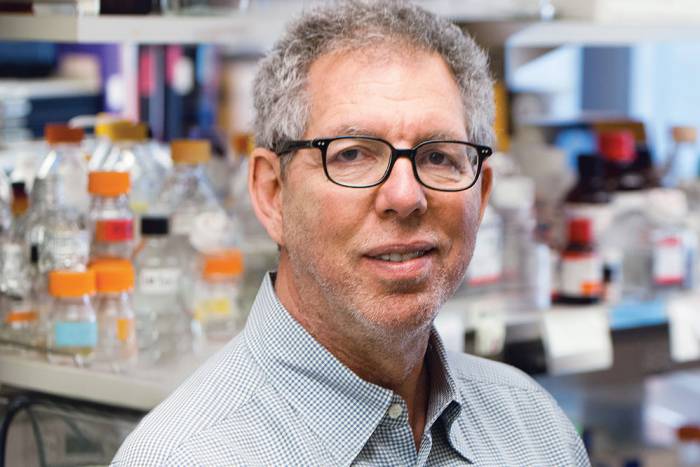Rockefeller University researchers find molecule that controls the balance between bone creation and bone destruction
Discovery may have important implications for treating bone disease
Researchers at The Howard Hughes Medical Institute at The Rockefeller University have identified a novel molecular mechanism by which a molecule called TRANCE controls the balance between bone formation and bone destruction. The research, published in the Dec. 22 issue of the journal Molecular Cell, provides long-sought-after answers to questions about bone metabolism and has important implications in the treatment of bone diseases such as osteoporosis and rheumatoid arthritis.
“We finally have begun to make headway in understanding the molecular mechanisms that regulate bone physiology. Our data will help propel the development of novel therapies to treat diseases of bone which afflict hundreds of millions of people worldwide,” says Yongwon Choi, Ph.D., associate professor and head of the Laboratory of Immunology, who is the senior author on the paper. Choi is also an associate investigator at HHMI.
The creation and destruction of bone are closely intertwined processes. The skeleton is continuously remodeled through the coordinated action of osteoblasts (which form bone) and osteoclasts (which break down bone in a process called resorption). Together, these cells are critical for the development, renewal and repair of the skeleton. The two systems work in harmony in a healthy person, but when the balance is disrupted, severe diseases such as arthritis and osteoporosis can result. In addition, bone loss begins at a very early age, a condition that is exacerbated in post-menopausal women, eventually leading to osteoporosis and an increased risk of life-threatening fractures. Biomedical fellow Brian Wong, in Choi¹s laboratory, identified a factor called TRANCE in 1997 and showed, in collaboration with other laboratories around the world, that it is the critical factor that controls breakdown of bone by osteoclasts.
The knowledge of how TRANCE works could provide specific ways to block or enhance the function of osteoclasts, depending on the disease. Therefore, Choi and Wong, in the Laboratory of Immunology, along with Daniel Besser, Ph.D., a postdoctoral fellow in the Laboratory of Molecular Oncology, set out to explore the signaling events regulated by TRANCE in osteoclasts.
“The known signaling events turned on by the TRANCE receptor could not account for the dramatic morphologic and cytoskeletal alterations caused by TRANCE in osteoclasts. We were looking for something completely novel,” recalls Wong.
Seeking clues from gene “knockout” experiments, the researchers noted that when a gene called c-Src was removed, mice exhibited defects in their osteoclasts that led to the thickening of their bones. This provided the first evidence that c-Src might be regulated by TRANCE and its receptor (TRANCE-R). Research on c-Src was pioneered at The Rockefeller University by Hidesaburo Hanafusa, former head of the Laboratory of Molecular Oncology and a co-author of the paper.
In the Molecular Cell paper, the Rockefeller team demonstrates that TRANCE directly regulates c-Src, and it does so through an adapter protein called TRAF6, which acts as a bridge to physically link c-Src to the receptor. Since TRAF6 and c-Src have very selective functions in osteoclasts, pharmacologically inhibiting these molecules may allow for the treatment of bone diseases without the side effects caused by some currently used drugs. “The manner in which TRANCE activates c-Src is unique. The kind of molecular detail we have provided may allow the identification of novel drug targets specific to diseases involving osteoclasts” says Wong. Their molecular model was corroborated by data from a recent study showing that mice engineered to lack TRAF6 exhibited the same defects in osteoclasts as the c-Src knockout mice.
Their results have even broader implications. The same molecules involved in mediating the effects of TRANCE are also involved in controlling the effects of other aspects of the immune system.
The authors hope that, in addition to answering important questions about basic bone biology, this new finding can offer a drug target to alleviate the bone destruction caused by arthritis and osteoporosis. Wong, a MD/PhD student who recently completed his PhD, says that this type of research is exciting since it is a clear indication of how basic research can directly translate into potential therapies. “If you know the nuts and bolts of a disease, the chances of finding a cure are infinitely increased,” he says.
Other authors on the paper include Joseph Arron and Nacksung Kim, of the Laboratory of Immunology at The Rockefeller University; and Masha Vologodskaia, of both the Laboratory of Immunology at Rockefeller University and the Howard Hughes Medical Institute. Professor Hidesaburo Hanafusa is now at the Osaka Bioscience Institute in Japan.
This work was supported by the Howard Hughes Medical Institute and by the National Institute of Allergy and Infectious Diseases and the National Cancer Institute, both part of National Institutes of Health. Wong and Arron were supported by NIH Health Medical Scientist Training Program grants. Besser was supported by a fellowship from the Norman and Rosita Winston Foundation.


